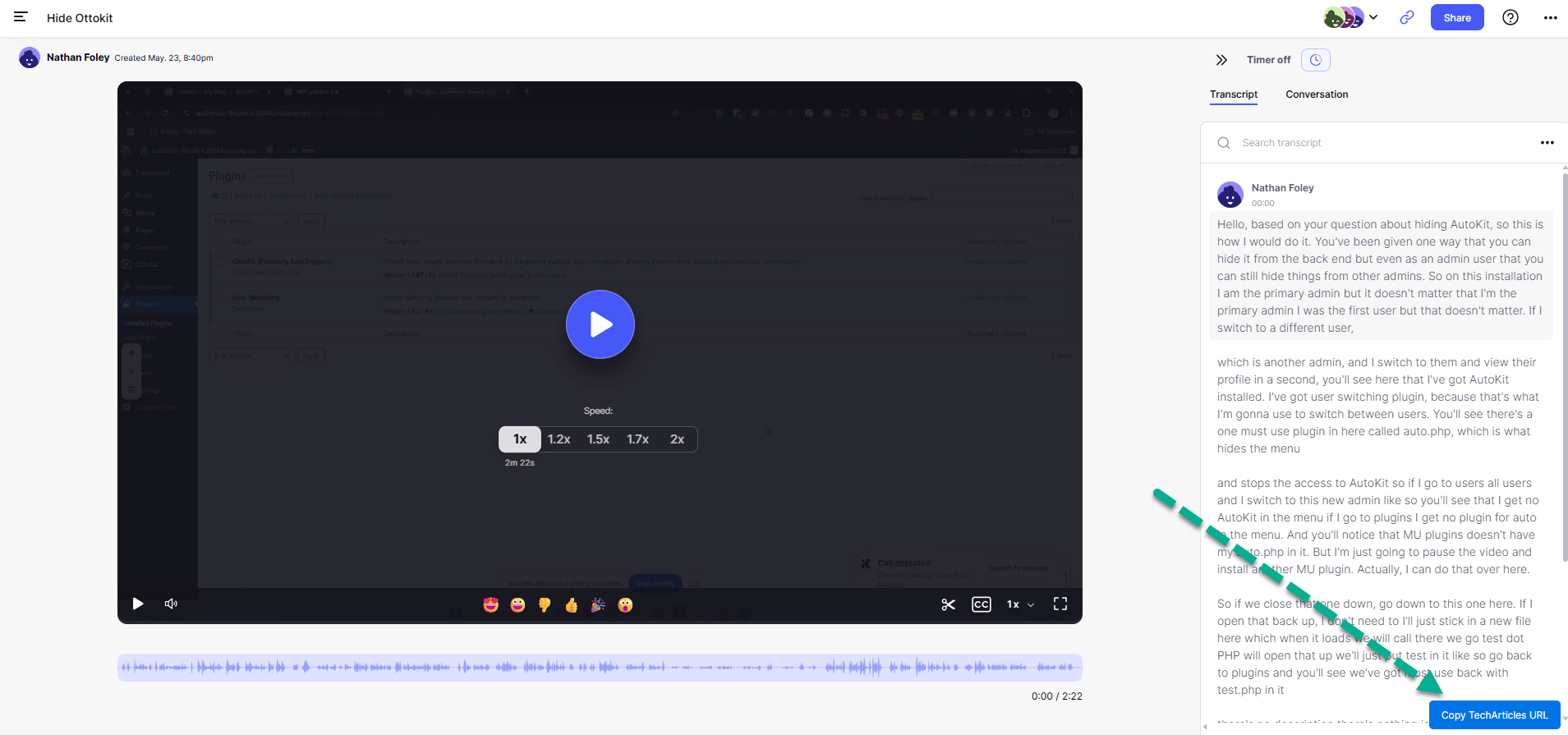I use several screen recording software, and the most used one is usebubbles.com. I include bubbles on this site. I purchased two accounts on a deal a while ago and have been using it ever since. It just works.
It has replaced loom for me, and just like with loom, I am not at all worried by the fact it’s not “WHITELABELED”. I do have access to a Komodo, Zight and other such software that can be whitelabeled, but I am not trying to pretend I have my own of everything.
This white label CNAME obsession is real, and I can understand it, but ultimately, I am not trying to convince anyone I own or created bubbles. I use it because it works, and that’s enough for me. Reliable tools are what matter. Look at the big brand using SurveyMonkey or Typeform; it’s not on their radar.
Curiosity
That said, tonight, curiosity got the better of me. Could I brand the domain of a service like Bubbles without that CNAME ability?
So I immediately thought that I needed an NGINX proxy, I have a dozen or so servers with Gridpane, and although it doesn’t offer non-WordPress sites, this should be achievable there, and after reading the docs and having a play, I took the following steps
Create a Site in GridPane
Point its DNS A-record at my server’s IP.
In the GridPane dashboard, go to Sites → Add Site →
Set the Site Domain to Yoursite.com.
Make sure to enable SSL etc
Once installed and setup comment out the -php config
We only want to sue this for a proxy, no PHP, and as such, we need to comment out or delete the content of /etc/nginx/common/yoursite.com-php.conf
I then moved all the WordPress files into a directory too to be safe.
Add a new Conf
Add a new conf to your site’s nginx folder, i.e /var/www/yoursite.com/nginx/custom-proxy-main-context.conf
Then add the following code,
# proxy_mydomain.conf
server {
listen 80;
server_name mydomain.com;
return 301 https://$host$request_uri;
}
server {
listen 443 ssl http2;
server_name mydomain.com;
ssl_certificate /etc/letsencrypt/live/mydomain.com/fullchain.pem;
ssl_certificate_key /etc/letsencrypt/live/mydomain.com/privkey.pem;
# this block now OWNS / entirely
location / {
proxy_pass https://app.usebubbles.com$request_uri;
proxy_set_header Host app.usebubbles.com;
proxy_set_header X-Real-IP $remote_addr;
proxy_set_header X-Forwarded-For $proxy_add_x_forwarded_for;
proxy_set_header X-Forwarded-Proto $scheme;
proxy_http_version 1.1;
proxy_set_header Upgrade $http_upgrade;
proxy_set_header Connection "upgrade";
proxy_buffering off;
proxy_cookie_domain app.usebubbles.com mydomain.com;
}
}
then I ran the following to make sure I’d commented out and cleared my item correctly
nginx -T | grep custom-proxy-main-context.conf
gp nginx reload
I had a successful reload of nginx and watched a link. Here is the original bubble, and here is my proxied
So that all worked, I thought about copying links from bubbles with my custom masked domain. So, as I already have a shedload of tapermonkey scripts, that’s what I settled on as a method.
The finished article was achieved with the following code
// ==UserScript==
// @name Bubbles ➞ TechArticles Copy Button
// @namespace https://video.techarticles.co.uk/
// @version 1.1
// @description Adds a “Copy TechArticles URL” button to Bubbles share pages.
// @match https://app.usebubbles.com/*
// @grant none
// @run-at document-end
// ==/UserScript==
(function() {
'use strict';
// Only run on share pages (optional filter)
if (!/\/[A-Za-z0-9_-]+\/[A-Za-z0-9_-]+/.test(location.pathname)) return;
// Create the button
const btn = document.createElement('button');
btn.textContent = 'Copy TechArticles URL';
Object.assign(btn.style, {
position: 'fixed',
bottom: '20px',
right: '20px',
padding: '10px 15px',
'background-color': '#0073e6',
color: '#fff',
border: 'none',
'border-radius': '5px',
cursor: 'pointer',
'z-index': 10000
});
btn.addEventListener('click', () => {
const newUrl = location.href.replace(
/^https:\/\/app\.usebubbles\.com/,
'https://yourdomain.com'
);
navigator.clipboard.writeText(newUrl)
.then(() => {
btn.textContent = '✔︎ Copied!';
setTimeout(() => btn.textContent = 'Copy TechArticles URL', 1500);
})
.catch(err => {
console.error(err);
btn.textContent = 'Copy Failed';
setTimeout(() => btn.textContent = 'Copy TechArticles URL', 1500);
});
});
document.body.appendChild(btn);
})();
It adds a little button below to copy a personalised link.

So, in short, it is possible. I’ve proved that I have a little bit more work to do on this for testing purposes. I want to build a test cloud panel and Docker server, and I think this would be a useful project for that. I will likely add a new tutorial, as it’s more accessible and free than the grid pane method above.
Now, I don’t think I will use this in production much, if at all. For this software, in the way I use it, I don’t see the benefit, but it was well worth the experiment to see if I could do it.
